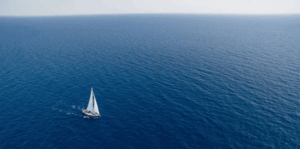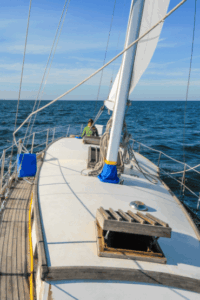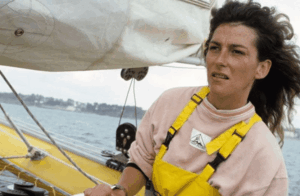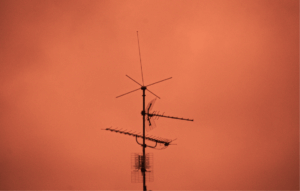Single-handed sailing – also known as solo sailing – isn’t just another endurance sport. It’s one of the most raw, punishing, and mentally demanding athletic pursuits on the planet. Picture it: you’re alone on a 40-foot boat, hundreds (if not thousands) of miles from land, with no backup, no rest, and no safety net. Every rope, sail, navigation decision, and life-or-death call? That’s on you.
It’s not for the faint of heart. But for the select few who chase this lifestyle, it’s the ultimate crucible of physical grit, self-mastery, and survival.
What Is Single-Handed Sailing?
Solo sailing means piloting and managing an entire sailboat completely on your own. No crew, no co-pilot. You handle the rigging, sails, repairs, meals, navigation, and watch shifts solo.
This isn’t your weekend sailing club. It’s an elite, niche form of competitive and recreational sailing that often involves open-ocean voyages across thousands of miles. Some solo sailors participate in legendary races like the Vendée Globe, a non-stop, solo, around-the-world competition with no assistance. Others simply crave the challenge of extended solitude at sea.
Either way, you’re exposed to every element and responsible for every single detail – and your margin for error is razor thin.
The Physical Toll: Sleep, Strength, and Sheer Endurance
One of the biggest physiological challenges in solo sailing is sleep deprivation. Sailors can’t just knock out for 8 hours and hope the ocean behaves. The weather can change in minutes. Systems can fail. Other boats can appear on collision paths. So solo sailors take micro-naps – 15 to 30 minutes at a time – cycling between sleep and wakefulness for weeks on end.
This does real damage over time. Reaction times slow down. Emotions fray. Hallucinations are common. The ocean doesn’t care if your brain chemistry is cooked – you still need to reef the sail in 35 knots of wind.
Physically, the job demands constant movement: grinding winches, pulling ropes, balancing on a shifting deck while drenched and sleep-deprived. You need grip strength, cardiovascular fitness, and mobility – not to mention the ability to self-treat injuries, bruises, and sometimes infections or saltwater rashes.
You also have to manage limited food and water carefully. Many solo sailors rely on freeze-dried meals and onboard desalination units. A mistake in rationing can lead to dehydration or malnourishment, which is especially dangerous when your energy output is high and sleep is limited.
Mental Toughness: The Deep Ocean Headspace
Solo sailing has a nickname among veterans: “the loneliest sport in the world.” It’s not just about being alone; it’s about confronting yourself minute by minute, mile after mile.

There’s no one to complain to, no one to distract you from the silence. That solitude breaks many would-be solo sailors. For others, it unlocks a kind of focus and self-intimacy that no other sport can match.
You’re constantly making high-stakes decisions with limited information, while wet, cold, and running on two hours of sleep. The pressure cooker of being isolated while managing a million variables – weather, gear, route, mental health – teaches you more about your mind than any psychologist ever could.
Loneliness is only one mental challenge. Add in fear – of storms, of hitting debris, of mechanical failure – and you have a potent psychological cocktail. And yet, many sailors describe this intensity as meditative. Out there, you are the system, the observer, the decision-maker. It’s a spiritual confrontation with both nature and self.
Notable Solo Sailors (And What They’ve Endured)
- Ellen MacArthur (UK): Broke the solo circumnavigation record in
 2005. Battled 30-foot waves, gear malfunctions, and days of zero sleep.
2005. Battled 30-foot waves, gear malfunctions, and days of zero sleep. - Yannick Bestaven (France): Winner of the 2020-2021 Vendée Globe. Slept in 20-minute increments for 80+ days.
- Mark Slats (Netherlands): Rowed solo across the Atlantic, then later sailed solo around the world in the Golden Globe Race.
- Clarisse Crémer (France): Became the fastest woman to sail solo around the world in 2021, enduring storms and self-repairs with grit and grace.
These are not superhumans. They’re ordinary athletes with an extraordinary tolerance for discomfort, risk, and solitude.
The Gear: Survival in a Storm
When it’s just you versus the ocean, gear matters – massively. Solo sailors rely on meticulously engineered boats and equipment to survive:
- Autopilots that keep the ship on course while you sleep or eat

- Storm sails and quick-release rigging systems
- Emergency Position Indicating Radio Beacons (EPIRBs) to signal distress
- Satellite comms for weather updates and limited contact
- Water makers, solar panels, and high-calorie food rations
But even the best gear can fail. That’s why resilience, adaptability, and the ability to improvise are even more valuable than the fanciest tech.
In some cases, solo sailors have had to climb their own masts mid-storm to fix sails or jury-rig rudder systems with what little tools they have onboard. There’s no one to call. Your life depends on ingenuity and grit.
Solo Sailing vs. Other Endurance Sports
Ultra-marathoners suffer physically. Combat athletes fight with skill and strategy. Free solo climbers dance with death. But solo sailing combines all of it:
- The endurance and sleep deprivation of an ultrarunner
- The tactical decision-making of a fighter
- The high-stakes exposure of an alpinist
- The solitude of a thru-hiker
And unlike most sports, there’s no crowd, no glory in the moment, no media coverage. It’s just you, your boat, and the next wave. Solo sailing is often argued to be the purest test of self-reliance in sport.
Why More Independent Athletes Are Drawn to It
In a world flooded with social media, performance metrics, and clickbait competition, solo sailing offers something deeper: a return to silence, elemental struggle, and presence.
competition, solo sailing offers something deeper: a return to silence, elemental struggle, and presence.
It attracts a certain breed of person: obsessive, prepared, humble, and curious. You have to love problem-solving. You have to be okay with getting scared. And you have to be able to suffer alone for days with no one to cheer you on.
For many, that’s not a deterrent. It’s the appeal.
There’s also the freedom aspect. Solo sailing is one of the few sports where you set your own pace, path, and purpose. You’re not bound to any starting gun or competition rules unless you choose to be. That autonomy is rare and deeply attractive to the right kind of athlete.
Final Word: The Ocean Doesn’t Care Who You Are
Unlike other sports, solo sailing doesn’t give a damn about your accolades, your PRs, or your follower count. The ocean is the great equalizer – it humbles everyone. And that’s the point.
accolades, your PRs, or your follower count. The ocean is the great equalizer – it humbles everyone. And that’s the point.
Solo sailing strips you down to your bare instincts. It’s about navigating more than a route, it’s about navigating yourself. The storms, the sleep deprivation, the solitude – they’re not obstacles. They’re the whole point.
Because in the middle of the ocean, miles from help, sleep-deprived and raw, you learn the real meaning of grit, and maybe, if you’re lucky, something even deeper.


 2005. Battled 30-foot waves, gear malfunctions, and days of zero sleep.
2005. Battled 30-foot waves, gear malfunctions, and days of zero sleep.





